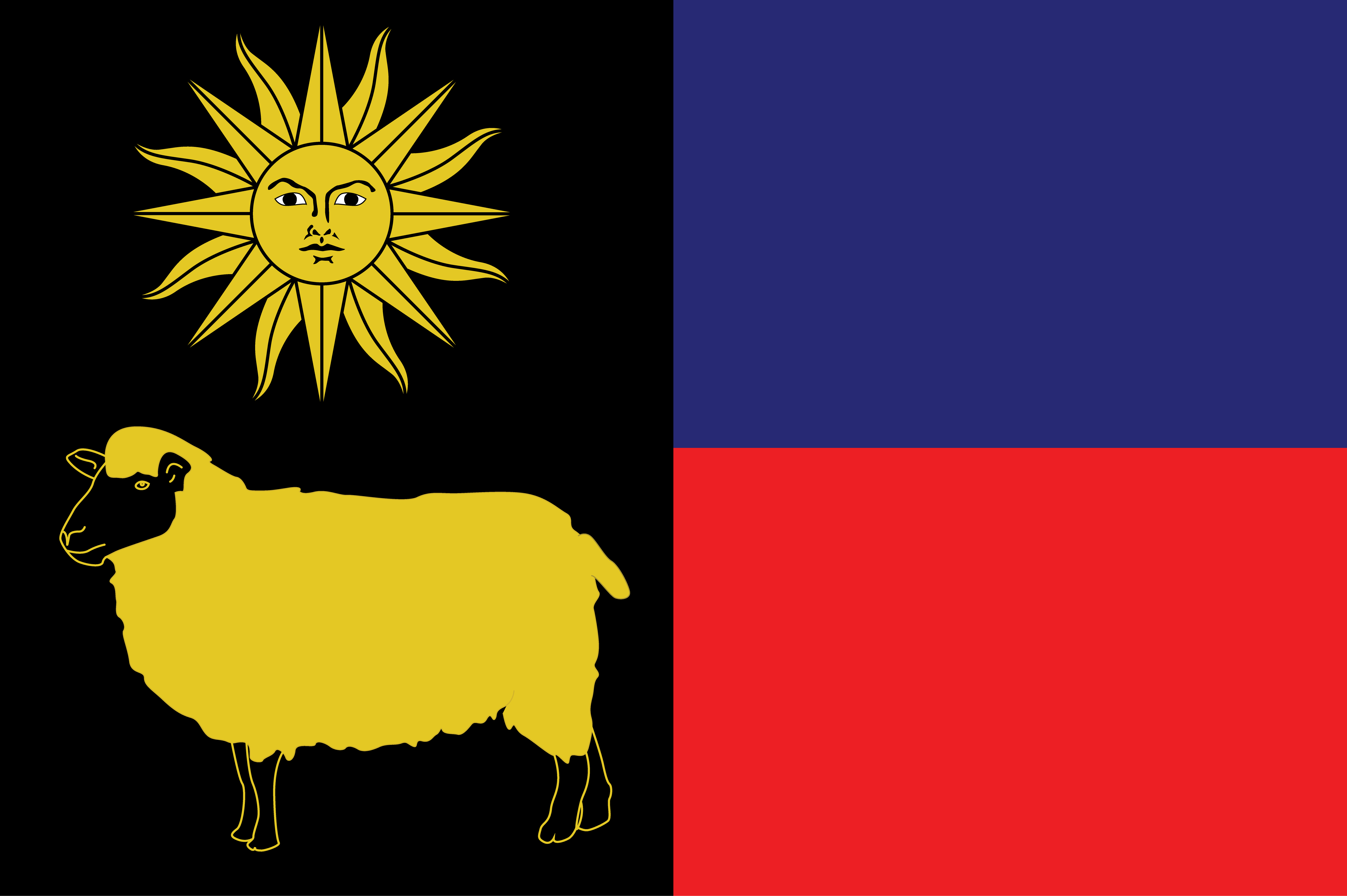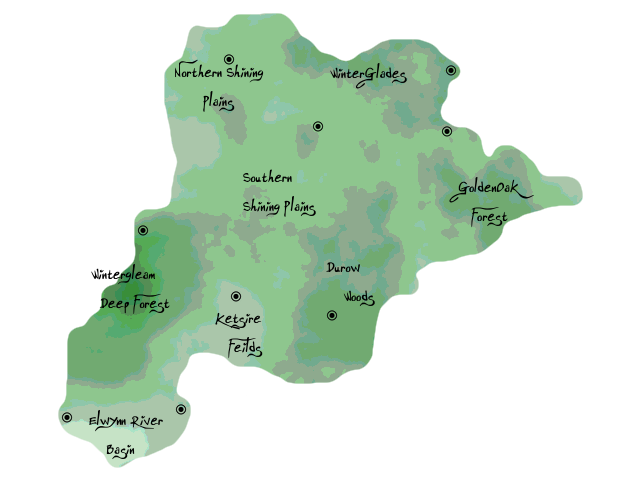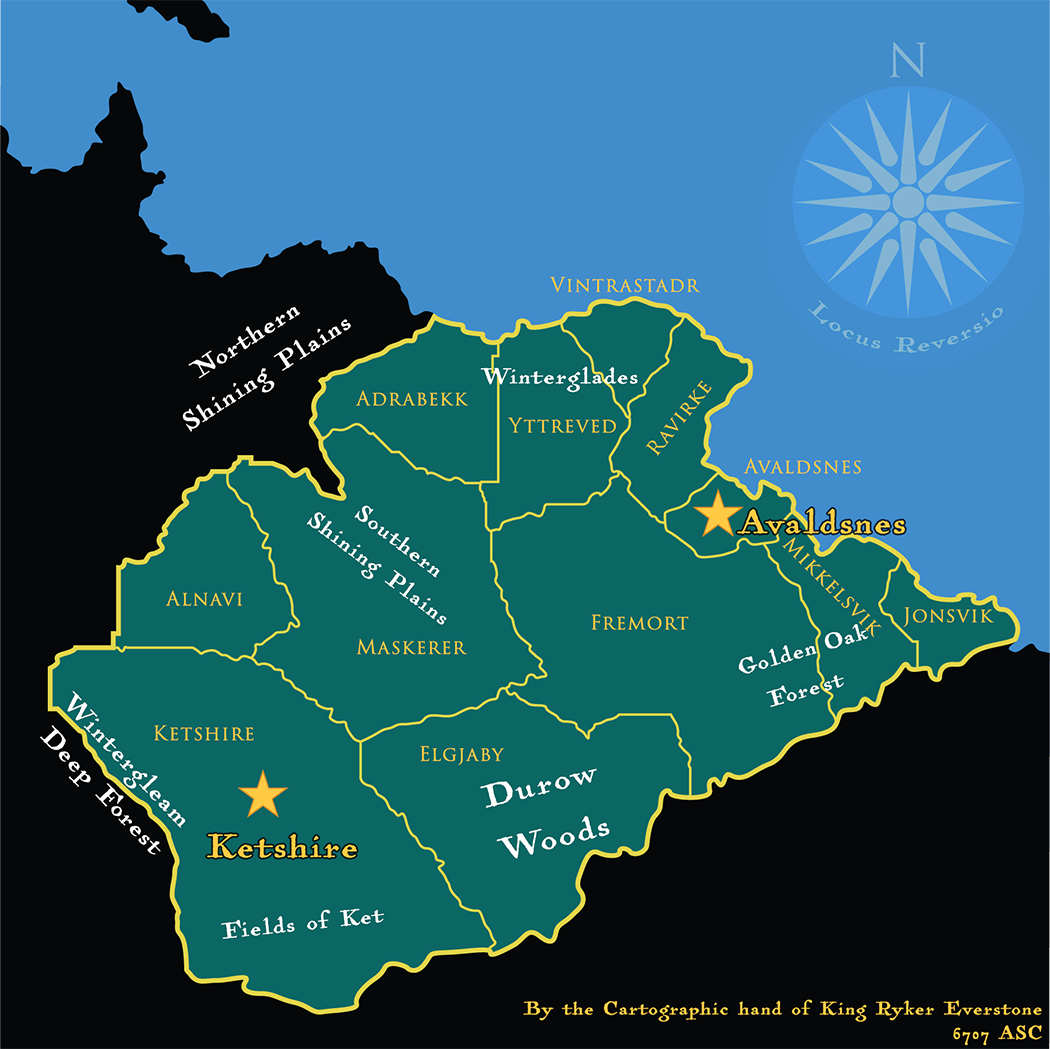Wintergleam

|
|
| Feudal Status: | County |
| Motto: | "Always Return" |
| Capital: | Avaldsnes |
| Largest Cities: | Avaldsnes |
|
| |
| Local Leadership Title: | Count of Wintergleam |
| Local Government: | Feudal |
| Current leader: | Ryker Everstone |
|
| |
| Local language: | Common Tongue, Hurmu Norse, Wintergleamish |
| Local Religion: | Bovic Faith, Hurmudanish Faith, Sheepist Church |

Wintergleam, formerly known as the Lands of Wintertide and Lands of Always Winter, is a County in northern Goldshire. It was a Circuit of the Royal Precinct of the Elwynnese Union which was known as the County of Agnesia and Wintergleam. Prior to being part of Elwynn, Wintergleam was a County of Goldshire (though slightly bigger then). Wintergleam had been Elwynnese since 1516. Wintergleam's Goldshirean roots are reflected in the weak strength of the both Elw language and the Church of Elwynn in the area.
From 1536 to 1542, in the days that Elwynn was called Froyalan, Wintergleam was part of the Barony of the Fórntida Kærleikalanden as a county in its own right. In 1545 the aforesaid Barony briefly returned to existence in the year 1545 when the Kaiser by decree undid Duke Ardashir II Moqtada al-Osmani's county-fication, which had abolished all Baronies in the Land between the Rivers, restoring the Baronies to prior status. Likewise was Wintergleam from 1546 to 1562 one of the counties of the Barony of Nordland within the Duchy of Elwynn.
In the year 1551 the area known as Avaldsnes was transferred from Wintergleam to Cimmeria due to Harald of Froyalan becoming Count of Cimmeria. Wintergleam received Wolfraven in exchange. The aforesaid situation lasted until 1565 when during the days of the House System the Landsraad of Shireroth passed a Bill transferring the Avaldsnes area back to the jurisdiction of Wintergleam and the self-same Act of Landsraad stipulated that Wolfraven would be a part of Cimmeria again. From 1565 until 1624 the Avaldsnes area remained part of Wintergleam. It nowadays constitutes the Septuaportian Bailiwick of Avaldsnes. This was all undone in 1651 when Avaldsnes and most of eastern Wintergleam were given to Goldshire by Elwynn following the Auspicious Occasion.
History
Introduction
The County of Wintergleam, which had been created during the New Feudalism Era, entered Elwynnese history when it was granted to Harald of Ettlingar Freyu in the year 1516 by Kaiser Alejian II as compensation for the loss of the County of Araxion. In exchange for the county grant Harald built Alejian a castle-like house on the coast of Wintergleam, which is to this very day known as Alejian Castle.
Wintergleam's coastal areas and its hinterland, especially the Avaldsnes area, had been inhabited by a community of Storish merchants for some centuries, some of them descendants of Valtian traders and others being associates or staff of the Sameinaða Erlendur Kaupsýsla Einokun Félagið, as well as a handful of non-Vikings who would become a part of the population group that would become known as the Fenririan Wintergleamers. Those people were after the year 1516 joined by those who would become the Haraldian Wintergleamers. The Haraldians and other Stors were removed from Wintergleam in 1561 after they were deemed at risk of violent discrimination by the oppressed native population.
The interior of Wintergleam, however, had for most of its existence remained a silent place home only to polar bears and people who liked the frigid temperatures of -40 to -55 ℃ encountered in the area, causing it to become known as the Lands of Always Winter. This changed with The Great Thaw.
Haraldian Reign
Count Harald's reign commenced in the year 1516 during one of the darkest periods of Elwynn's history: the Great Famine, a series of hunger famines that blighted rural Elwynn over the course of two decades. The hunger famines combined with the absence of the harsh central authority previously maintained by the Babkhi khans and amirs had caused the breakdown of law and order in the Duchy with innumerable criminal gangs, warlords as well as other thugs and low lifes rampaging across its lands leaving death and destruction everywhere they went. Even Eliria, the capital of Elwynn, was empty, dead, barren and silent.
Although Wintergleam was still mercifully untouched by the lawlessness in the other parts of the Land between the Rivers upon the arrival of Count Harald, which was partially due to much of Winteregleam at the time being inaccessible pre-Great Thaw frozen wastelands and partially caused by the presence of SEKEF troops in the coastal areas which served as a potent deterrent. Count Harald, however, realized that the malefactors who were molesting the Lands of Elwyna would inevitably come Wintergleam's way when they grew bolder or, of course, more desperate for greener pastures.
The first Count of Wintergleam had the non-frosted parts of his county thoroughly surveyed and subsequently embarked on a massive fortification spree which led to the construction of gargantuan walls around the city of Avaldsnes, which would become known as Haraldsveggir (Harald's Walls), as well as numerous fortresses along the coast of the Lands of Wintertide as well as the unfrozen parts of its hinterland, including the Snjórvirki and the Ísborg. Some of these fortresses are in use to this very day. Count Harald also founded the Snáwfyrd, which means Snow Fyrd in the Froyalanish and Wintergleamish languages.
Fenririan Reign
Several years later in 1551, shortly after Harald had resigned its countship in late 1550, Wintergleam was granted to Leo Dine, a new citizen of Shireroth who immigrated to the Duchy of Elwynn. Under the new rule of Count Leo a new law was imposed that had a large mass of sheep imported to the county to wrap the houses in the inland in to keep them warm, and it was the flatulence of those sheep, as well as a massive amount of cows, that caused The Great Thaw. It was also during his comital reign that the rest of the people who were to become known as the Fenririan Wintergleamers moved into the county.
Vandaveerian Reign
In 1560 Count Leo resigned from the Countship of Wintergleam, which subsequently remained vacant until the year 1575 when Elyssa Vandaveer was appointed Countess of Wintergleam by the Dutch of Kildare. (At the time Wintergleam was part of East Elwynn, which had been incorporated into Kildare as the Thanedom of Elwynn.)
Countess Elyssa proved to be quite the absentee countess barely attending to the government of Wintergleam, which largely fell, just like during the interregnum between her reign and that of Count Leo to the Comital Council of Wintergleam. Her comital reign came to an end in 1605, after Elwynn had reunified with Shireroth in the year 1600, when during the days of the Coordinated State the Counties of Elwynn became entirely ceremonial. The countships of the aforesaid Counties of Elwynn were abolished and although the law permitted the Court of the Prince to appoint Lord Lieutenants for the Ceremonial Counties as a mark of individual favour, there were no powers attached to the office of Lord Lieutenant. No Lord Lieutenant was ever appointed to any County of Elwynn during the Coordinated State era.
Post-Comital Era
The Ceremonial Counties of Elwynn ceased to exist in 1613, not ever to be revived again. For the first time in more than a century - ever since its creation in the New Feudalism Era - the Wintergleam area was not a subdivision in its own right anymore or part of any larger subdivision. This situation lasted until 1622 when during the Princely Reign of Jonathan Ayreon-Kalirion the Wintergleam area was joined with four other Elwynnese cultural areas, to wit: Cimmeria, Cape Farewell, Agnesia and Lesser-Iserdia to form a first-tier subdivision called Kiladôr, one of the six Lands of Elwynn.
In the year 1624, during the tenure of the Storjarl Hallbjörn Haraldsson as Steward of Elwynn, the Lands of Elwynn were abolished and replaced by thirteen first-tier subdivisions which later in 1624 were conferred upon by the White Orchid Throne the name of Princely Precincts and which in 1640 became known as Royal Precincts. The Wintergleam area, save for Avaldsnes which joined the Federation of the Seven Ports, became part of the first-tier subdivision which is to the present day known as the County of Agnesia and Wintergleam.
Since 1640 when the Royal Precincts of Agnesia and Wintergleam, Alalehzamin and Utasia, Amokolia, Illumination and Cimmeria and Íseirdia-la-Vraulalennir were subdivided into Circuits, Wintergleam is a Circuit of Elwynn. Great festivities, which went on for days, were held to celebrate that Wintergleam finally was a subdivision in its own right again. The Circuit of Wintergleam is comprised of fourteen Bailiwicks.
In late 1644, Ketsire in Wintergleam was used as a staging area by the UDF for its invasion of Goldshire during the Year of the Four Kaisers.
Return to Goldshire
In 1651, Vilhjalm of Elwynn partitioned much of Elwynn and gave territories to Malarboria, the Mango Throne, and Goldshire, which received the eastern part of its old county of Wintergleam.
Counts of Wintergleam
- Harald of Froyalan (1516–1550);
- Leo Fenrir (1551–1560);
- Elyssa Vandaveer (a.k.a. Elyssa van der Veer) (1575–1605);
- King Ryker (1651–).
Wards of Wintergleam
The County of Wintergleam consists of the following Wards:
- Ådrabekk
- Alnavi
- Avaldsnes
- Elgjaby
- enu Aralduruun
- Jonsvik
- Ketsire
- Maskere
- Mikkelsvik
- Råvirke
- Vintrastaðr
- Yttreveð
Sites of Interest
- Alejian Castle
- Blackhaven
- Durow Forest
- Goldenoak Forest
- Meadows of Ketsire
- Shining Plains
- Wild Woods
- Winterglades
- Yttreveð Forest

